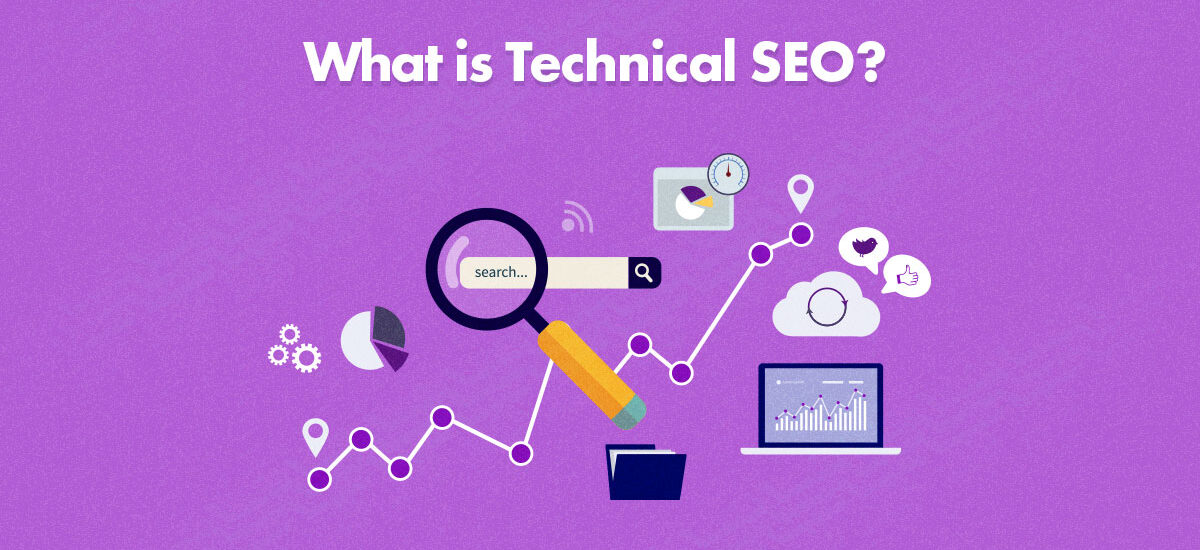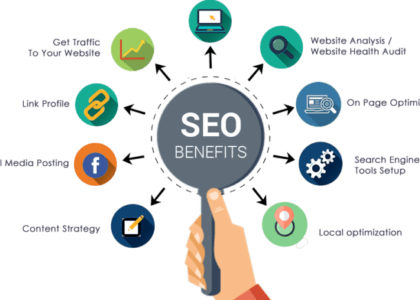Table of Contents
What is Technical SEO?
Technical SEO refers to the behind-the-scenes technical optimizations on a website that allow search engines to better understand and crawl a site. While content and on-page SEO focus on optimization of the content itself, technical SEO focuses on optimizing the underlying technical elements of a website.
The goal of technical SEO is to improve the ability of search engines to crawl, index, and understand the content and structure of a website. This involves setting up the proper technical foundations to allow search engines to efficiently spider and index pages. Some key elements of technical SEO include:
- Ensuring proper crawlability by fixing any crawling errors or restrictions. This allows search bots to fully access all pages.
- Optimizing pages for indexing through proper URL structure, internal linking, and meta tags. This helps pages get included and properly categorized in search indexes.
- Improving page load speed through site performance optimizations. Faster sites lead to better user experience and crawl efficiency.
- Optimizing for mobile devices with a mobile friendly design and site configuration. Mobile optimization is critical for search rankings.
- Implementing structured data markup to help search bots understand page content.
- Proper server configuration with efficient hosting, XML sitemaps, and robots.txt files. This facilitates crawling of the site.
- Conducting regular technical SEO audits to identify and address site issues.
With the proper technical foundations implemented, a site can focus more on content and higher-level SEO rather than basic technical errors hindering performance. Technical SEO creates the ideal framework for search visibility.
Importance of Technical SEO
Technical SEO plays a crucial role in a website’s ability to rank highly in search engines and provide a good user experience. While content and links are important ranking factors, if the technical foundation of a site has issues, it severely limits its search performance and ability to attract and retain visitors.
Some key reasons why technical SEO is important:
- Crawlers need to be able to easily index a site without running into errors or roadblocks. Technical issues like broken links, crawl errors, and blocking search engines can prevent pages from being indexed and hurt rankings.
- Fast page speed and mobile optimization lead to better user experience. Google uses page speed as a ranking factor and prioritizes mobile-friendly sites. Slow, unoptimized sites can get lower rankings.
- Proper implementation of structured data and schema markup enables rich results like star ratings, images, and more detailed snippets to show up for branded searches. This improves click-through rates.
- Optimizing and refreshing site architecture over time is needed as new pages and content get added. Information architecture impacts how easily users and crawlers navigate a site.
- Servers need to be properly configured to handle fluctuations in traffic and avoid crashing. Server errors directly impact site uptime and visitor experience.
By identifying and correcting technical issues, sites can dramatically improve their organic search performance and ability to convert visitors into customers. Technical SEO is the foundation for good SEO results overall.
Common Technical SEO Issues
Technical SEO encompasses various aspects of a website’s infrastructure that can impact search engine visibility and performance. Some of the most common technical SEO issues include:
Crawl Errors
Crawl errors occur when search engine bots cannot access or crawl certain pages on a site. This prevents pages from being indexed and found through search. Common crawl errors include 404 errors (page not found), 403 errors (access forbidden), and site mapping issues. Using site search console to identify and fix crawl errors is critical.
Indexing Issues
Sometimes pages may be crawled but not properly indexed by search engines, meaning they won’t show up in results. This can happen due to duplicate content, improper metadata, or pages blocked through robots.txt files. Checking indexing in search console and optimizing page titles and meta descriptions can improve indexing.
Slow Page Speed
Page speed measures how fast pages load. Slow page speeds negatively impact user experience and SEO. Optimizing images, minimizing HTTP requests, enabling compression, and using caching are key ways to improve page speed. Tools like PageSpeed Insights and WebPageTest can identify speed bottlenecks.
Poor Mobile Optimization
With more searches on mobile, having a mobile-friendly site is essential. Technical considerations include responsive design, avoiding flash, optimizing for touch screens, and enabling Accelerated Mobile Pages (AMP). Google provides a mobile-friendliness test to identify issues.
Monitoring and quickly resolving technical SEO issues is important for visibility. Technical audits identify problems to address. With robust website infrastructure and technical optimization, sites can better reach their target audience.
Fixing Crawl Errors
Crawl errors occur when search engine crawlers try to access a page on your site but run into an issue, such as a 404 error page. Fixing crawl errors should be a priority for technical SEO, as they can negatively impact your site’s crawling and indexing.
The main types of crawl errors to fix are:
- 404 errors – These occur when a page cannot be found on your server. Use server logs to identify the sources of 404s. Set up redirects for any valuable pages that have gone missing to prevent losing that equity. You can also implement custom 404 pages to improve the user experience.
- Redirect chains – These happen when pages redirect multiple times. Search engines may stop following after 5-10 hops. Reduce long chains by consolidating redirects and pointing directly to the final destination URL.
- Canonical tags – Using proper canonical tags helps avoid duplicate content issues by signaling the preferred URL. Make sure canonical tags are consistent sitewide.
- Sitemaps – Submit XML sitemaps to ensure search engines can discover new and updated content. Sitemaps don’t guarantee indexing but can improve crawl efficiency. Generate sitemaps using a plugin or script.
Analyzing crawl reports in Search Console can reveal the specific URLs producing errors. Focus on the pages with high volumes of errors first. Eliminating major crawl errors helps search engines efficiently index your site.
Optimizing for Indexing
Optimizing your pages for indexing refers to making adjustments to help search engines properly crawl, index, and understand your content. This ensures your site can rank for relevant queries and appear in search results. Some key optimizations include:
Title Tags
The title tag appears at the top of the browser and is a critical element for SEO. Title tags:
- Should be unique and descriptive for each page.
- Contain your target keyword for that page if logically possible.
- Are limited to about 60 characters. Google may cut off text after that.
Write title tags with your audience and searchers in mind. Aim for titles about 50-60 characters long that compel click-throughs.
Meta Descriptions
The meta description appears under the title tag in search engine results. Meta descriptions:
- Provide a snippet summarizing the page’s content.
- Are limited to 155-160 characters.
- Do not directly influence search ranking, but compelling descriptions can boost click-through rates.
Craft descriptive meta descriptions that make searchers want to click and visit your page.
Internal Linking
Linking between related pages on your site tells search engines which pages are most important and relevant for different topics.
- Link relevant keywords naturally within your content.
- Create site architecture that links deeper pages to more general top-level pages.
- Make sure all site pages are crawlable and linked together.
Schema Markup
Schema markup uses code to help search engines understand your content and display it better in results. Markup can enhance sitelinks, star ratings, events, and more. Common schema include:
- Organization
- Person
- Recipe
- Review
- Event
- Product
Add markup where applicable to enhance search presence and clicks. Validate all code.
Improving Page Speed
Page speed is a critical factor in SEO, user experience, and conversion rates. Some key ways to optimize page speed include:
Minify Code – Minification removes unnecessary characters from code like whitespace, comments, and newlines without changing its functionality. This reduces file size and speeds up loading. Tools like HTMLMinifier, cssnano, and UglifyJS can minify HTML, CSS, and JavaScript files respectively.
Compress Images – Image optimization reduces file sizes through techniques like compression and resizing. TinyPNG, Kraken, and ImageOptim are excellent image compression tools. Using next-gen formats like WebP and AVIF can also reduce image weight.
Enable Caching – Caching stores assets locally so repeat visits don’t have to re-download them. Browser caching via headers like Cache-Control, and server-side caching solutions like Varnish speed up sites.
Use a CDN – Content delivery networks (CDNs) distribute assets globally so visitors load them from nearby servers, reducing latency. Popular CDNs include Cloudflare, Akamai, and Amazon CloudFront.
Lazy Load Images – Lazy loading defers offscreen image loading until users scroll near them. This cuts initial load times and data usage. JavaScript libraries like LazySizes can add lazy loading.
Optimize Database Queries – Tuning database queries, adding indexes and caching layers make database operations faster. Database optimization is key for dynamic, data-heavy sites.
With a fast site, visitors spend less time waiting and more time engaging with content. Page speed optimizations greatly improve user experience and SEO.
Mobile Optimization
Optimizing a website for mobile devices is critical for providing a good user experience and boosting SEO. With more and more people accessing the internet on smartphones and tablets, having a mobile-friendly site should be a top priority.
Responsive Web Design is the recommended approach, where the site fluidly adapts to fit the screen size of any device. This ensures content is accessible and easily readable regardless of how it is viewed. Using relative units like percentages or EM for font sizes, instead of fixed pixels, allows text to rescale based on the viewport. Responsive frameworks like Bootstrap make it easy to build sites that work seamlessly on desktop and mobile.
Mobile sites should be fast loading, with reduced image sizes and compressed files. Using browser caching and lazy loading further improves performance. Accelerometer data can detect device orientation and adjust the UI between portrait and landscape modes.
Specific technical considerations apply for Apple iOS and Android devices. Apple supports newer JavaScript APIs than Android, so sometimes code needs to be branched for compatibility. Apple uses WebKit as the browser engine while Android uses Blink, so testing on both platforms is important. Android screen sizes vary more than iOS, challenging responsive design.
In summary, optimizing for mobile goes beyond just making a site look good on smaller screens. Technical implementations like responsiveness, performance tuning, and handling device APIs are critical for a positive mobile user experience. This in turn boosts engagement metrics and SEO.
Structured Data Markup
Adding structured data markup to your pages allows search engines to better understand your content and display it in rich results. Structured data uses schema.org and microdata, JSON-LD, or RDFa to annotate page content. When Google recognizes this schema markup, it can generate rich snippets in the search results.
Schema.org provides a collection of schemas that webmasters can use to markup their pages with microdata. For example, you can use schema.org/Event to markup events, schema.org/Recipe to markup recipes, and so on. Popular schemas include:
- Reviews
- Events
- People
- Products
- Recipes
- Videos
By adding review schemas, you can get rich stars in the search results. Event schemas enable Google to show event details like date, location, description, and images. The recipe schema provides a rich recipe card result.
Structured data also feeds into the Google Knowledge Graph. The Knowledge Graph shows informative boxes to the right of the search results. These boxes draw data from your structured markup to showcase useful information from your pages. For example, Knowledge Graph can display key data about local businesses, company details, sports team stats, and more.
Overall, implementing schema.org microdata should be a priority for any SEO strategy. Structured markup enables your most important pages and content to stand out with rich results. Just make sure to focus on using relevant schema types that make sense for the content.
Server Configuration
A website’s server setup and configuration can significantly impact SEO and site performance. Optimizing the web server is a key technical SEO task. Here are some best practices:
Web Hosting
- Choose a reliable web host with minimal downtime and fast page load speeds. Avoid overcrowded shared servers.
- Ensure your web host supports the latest technologies like HTTP/2 and TLS 1.3 encryption.
- Pick a host located geographically close to your target audience to minimize latency.
- Scale hosting resources like RAM and CPU power as your traffic grows. Monitor site uptime and response times.
Enable HTTP/2
- HTTP/2 speeds up page loads by allowing multiple files to load in parallel over one connection.
- It reduces latency through features like server push.
- Most modern web servers support HTTP/2 like Nginx and Apache. Use the HTTPS protocol to activate it.
SSL Certificates
- HTTPS encryption is a must for security and SEO. Get an SSL certificate and enable it site-wide.
- Prioritize page speed when choosing an SSL type. Opt for ECDSA or Nginx certificates.
- Redirect all HTTP requests to HTTPS using server rules.
Geotargeting
- Use content delivery networks (CDNs) and geo-distributed hosting to deploy servers near your target visitors.
- This reduces latency and improves SEO for geo-targeted keywords.
- Configure the web server to redirect users to their local site version using headers like Accept-Language.
Technical SEO Audits
Technical SEO audits are a critical part of an effective SEO strategy. They allow you to identify issues that may be hindering your site’s performance in search engines. There are a variety of tools available to run comprehensive technical audits. Some key things to look for in an audit include:
Crawl Errors
Crawl errors occur when search engines are unable to access certain pages on your site. This is often due to technical configuration issues like blocking robots.txt files, incorrect use of noindex tags, or broken links. Technical audits reveal crawl errors so you can properly fix them.
Page Speed
Page speed measures how quickly your site loads. Slow load times lead to poor user experience and can negatively impact rankings. Audits measure page speed so you can optimize images, minify code, and implement caching to improve performance.
Mobile Friendliness
With the majority of searches happening on mobile, having a mobile-friendly site is essential. Technical audits check for elements like readable text size, tap targets, and proper configuration of viewport meta tags.
Structured Data
Adding structured data markup tells search engines about your content in a machine-readable way. Audits validate proper schema implementation to maximize how search engines can interpret and display your pages.
Once you’ve run an audit, you’ll get a prioritized list of fixes. Systematically optimizing these technical elements will greatly improve your site’s ability to rank in search engines and provide a better experience for users. Regularly conducting and acting on technical SEO audits is key for ongoing success.





